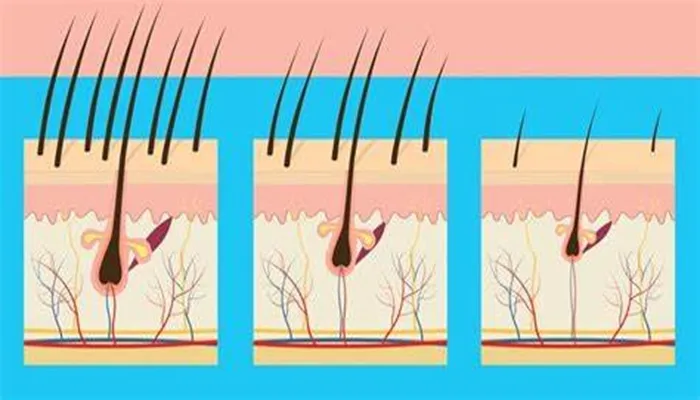DHT hair transplantation is a specialized form of hair restoration surgery that focuses on utilizing hair follicles from areas of the scalp that are resistant to the effects of dihydrotestosterone (DHT), a hormone responsible for hair loss. This method aims to provide a more effective and natural-looking solution for individuals experiencing hair loss. In this article, we will explore the process, benefits, and considerations of DHT hair transplantation in detail.
The Role of DHT in Hair Loss
DHT is a hormone derived from testosterone and plays a significant role in hair loss, particularly in male pattern baldness. Hair follicles in certain areas of the scalp are genetically sensitive to DHT, which causes them to shrink and eventually stop producing hair. In contrast, hair follicles from the back and sides of the scalp are typically resistant to DHT and continue to grow hair even when transplanted to areas affected by hair loss.
The DHT Hair Transplant Process
Pre-Procedure Preparation
Before undergoing a DHT hair transplant, thorough preparation is essential for the success of the surgery. This includes:
Consultation with a Specialist: Choose a qualified and experienced surgeon who specializes in hair transplants. They will evaluate your medical history and conduct a detailed scalp analysis.
Pre-Surgery Guidelines: Follow your surgeon’s advice, which may include stopping certain medications, avoiding alcohol, and addressing any pre-existing health issues.
Step-by-Step Procedure
Hair Follicle Extraction: The surgeon begins by using specialized tools to extract healthy hair follicles from the donor area, typically the back of the head.
Immediate Implantation: Unlike traditional techniques, DHT follicles are implanted immediately after extraction. This reduces the time hair follicles spend outside the body, increasing their survival rate.
Minimally-Invasive Operation: The process involves local anesthesia, making it virtually painless and requiring no stitches or large incisions.
Post-Procedure Care
- Recovery is relatively straightforward with DHT. Patients are advised to:
- Avoid touching or washing the treated area for a few days.
- Follow prescribed aftercare instructions to promote healing and graft survival.
- Monitor and manage mild side effects like swelling or redness with the guidance of your clinic.
Benefits of DHT Hair Transplantation
Enhanced Graft Survival
Immediate implantation significantly reduces the time hair follicles spend outside the body, increasing their survival rate and improving overall outcomes.
Natural-Looking Results
The precise placement of individual follicles ensures that hair grows in the correct direction and density, blending seamlessly with your existing hair.
Minimally Invasive with Faster Recovery
Since DHT is minimally invasive, there’s little to no scarring, and recovery time is significantly shorter. Most patients return to normal activities within just a few days.
Ideal for a Range of Hair Loss Patterns
Whether you experience thinning hair or balding in specific areas, DHT offers a highly customizable solution that works for various hair loss patterns.
Considerations and Suitability for DHT Hair Transplants
Who Should Consider DHT?
Ideal candidates for this procedure often have the following characteristics.
- Sufficient donor hair available from areas like the back of the scalp.
- Specific hair loss patterns that make individual follicle implantation suitable.
- Realistic expectations about the procedure and its results.
Potential Risks and Side Effects
While DHT is generally safe, like all medical procedures, it comes with risks.
- Scalp redness or swelling.
- Rare cases of infection if post-procedure care isn’t followed.
- Choosing a certified and experienced surgeon minimizes these risks.
Conclusion
DHT hair transplantation offers a highly effective and natural-looking solution for hair loss by utilizing DHT-resistant hair follicles. The immediate implantation of follicles and minimally invasive nature of the procedure contribute to enhanced graft survival and faster recovery. If you are considering a hair transplant, consult with a qualified specialist to determine if DHT hair transplantation is the right choice for you.
Related topics:
- What is DHT and How to Reduce It
- What You Need to Know About DHT and Hair Loss
- What Does DHT Do to Hair Follicles?


